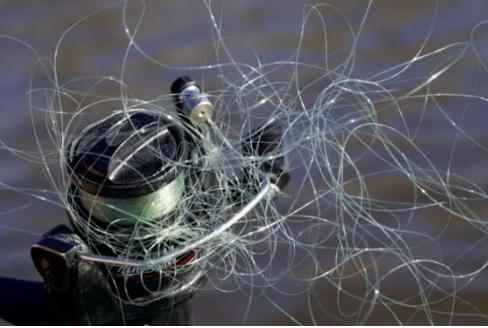A few weeks ago, six of our seven grandchildren came to visit us in Easton. It was a week that previewed summer. One of the activities they love, like all kids, is fishing. Down to our dock we trekked with worms, bobbers, and spin rods in hand. With worms appropriately fixed to the hooks, casts were made into Chapel Cove. One, then two, strikes. Excitement rose as small white perch were landed and then released. Then it happened, as it always does. One of the monofilament lines became so tangled it looked like an osprey nest…a true Gordian Knot. I am sure that I could have untangled the mess, but it would have taken 15 or 20 minutes. I made the decision to simply cut the line at both ends of the tangle and then rejoin the lines with my best surgeon’s knot. Back fishing in 3 minutes.
This reminded me of a recent mediation I conducted for the District Court. The parties were in conflict over the completion of a roof repair. The roofer wanted to see final payment for a job considered complete. The homeowner expected some additional work to be done to a skylight. One party filed a complaint in court and expected to argue their case. The other party came to defend themselves. However, at the judges suggestion, they agreed to mediation. As they shared their two versions of the story, it became more and more confusing and circular. Was repair of the skylight included in the contract? Who said, or promised, what to whom was truly a Gordian Knot. My role as mediator was not to be a judge. Mediator’s do not decide the outcome, rather they facilitate a conversation that, hopefully, ends in a settlement acceptable to both parties. I don’t think a judge would have been able to unravel the story, or have the patience to do so.
For the parties to a mediation, whether it is over a roof repair or divorce, it is very hard to get beyond trying to explain their version of the story and realize the goal of mediation is to get beyond the past, and put the parties in control of their future. To do that, they first must decide to cut the tangle at both ends and discard the tangled story. This is so difficult because court referred parties often come to mediation as adversaries…they are in conflict…one is right, the other wrong. They are invested in their version of the story. The great insight comes when both parties realize the outcome (or settlement) can meet the needs of both parties. One party does not have to win and the other loose. Once that mental switch is thrown, the conversation moves to discovering a creative and flexible agreement. That agreement will not be perfect, it will involve compromise, but it is far better than leaving the decision to the court.
There is one fact to keep in mind. Mediation is confidential. Nothing discussed or shared in a mediation session can be used in court at a later time. Therefore, the risks are minimal and the upside is reaching a settlement you control and works for both parties.
Steve Forrer, former dean and vice chancellor of University of Maryland Global Campus, is currently a mediator for the Maryland District and Circuit Courts. Questions can be submitted at www.doncastermediation.com/contact for Steve to answer in this column. He also accepts private mediations



Thomas Elliott Hill says
Steve–My 12th grade English teacher, Dorothy Leonard, always said a example speaks the loudest. Thank you for giving us an example of how mediation works.
Best,
Tom